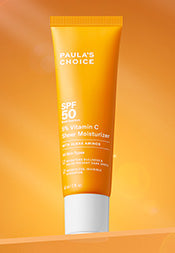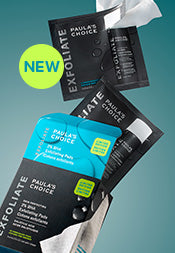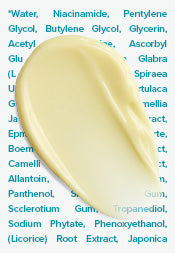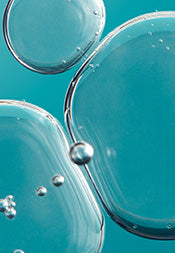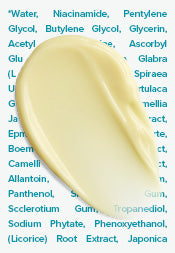Packaging Matters: Reasons to Ditch Jar Packaging Skincare
If you’re spending money on skincare products that come in jar packaging, you’re doing your skin a major disservice, especially when buying anti-aging products. We reveal what the research has to say about this topic and share the kinds of effective skincare packaging required for maximum benefit.
Jar Packaging & Skincare Ingredient Stability Issues
Research makes it clear that many of the best ingredients for skin—including antioxidants for the skin and anti-aging champions like vitamin C and retinol— break down in the presence of air. Essentially, opening a jar packaging lets air in, causing these important skincare ingredients to begin deteriorating, becoming less effective with each use.
Making matters worse, see-through glass jars, clear bottles or tubes allow routine exposure to daylight, further compromising the efficacy of these types of ingredients.
There’s also the hygiene issue. Every time you dip your fingers into the jar to apply the skincare product, you contaminate the formula. Even if you wash your hands first or use the “special” spatula that accompanies some jar-packaged products, it’s simply impossible to keep the tools and your fingers completely clean. This hygiene issue stresses the preservative system, leading to further deterioration of the beneficial ingredients.
* Airless jars (the kind where you press the top down to dispense product without opening the jar) are the exception to this rule because they restrict airflow and help keep the delicate ingredients stable.
What to Look for in Smart Skincare Packaging?
Smart skincare packaging is a cornerstone of Paula’s Choice Skincare. From airless pumps, multi-layer tubes, and opaque bottles to UV-protected containers and air-restrictive openings, we make sure our complex formulas stay as potent and effective for as long as possible.
Here are a few examples of what state-of-the-art skincare packaging looks like:
Our CLINICAL 1% Retinol Treatment uses a double-walled opaque container and is filled via a unique stabilising process, allowing for next-to-zero exposure to oxygen.
Our C15 Super Booster contains a special internal stopper that prevents air from being pushed back into the bottle when you replace the dropper applicator.
The key takeaway: Minimising air and light maximises your skincare benefits.
Why the Skincare Industry Continues to Use Jar Packaging
You might wonder—if all of this is true, then why do companies continue to sell expensive skincare creams in jar packaging? Trust us, we’re just as frustrated by this as you are. It’s not like the research on jar packaging is locked and hidden away somewhere—it’s been around for years and is undeniably known among cosmetic chemists.
Case in point, the Guidelines on Stability of Cosmetic Products, published by the Cosmetic, Toiletry, and Fragrance Association (CTFA) in 2004 states: “Packaging can directly affect finished product stability because of interactions which can occur between the product, the package, and the external environment. Such interactions may include … barrier properties of the container [and] its effectiveness in protecting the contents from the adverse effects of atmospheric oxygen.…”
Regardless of these research-based facts about jar packaging, there remains a certain air of prestige tied to fancy, weighty jars, and many consumers still gravitate towards them over other packaging. That’s why so many skincare brands continue to use them, encouraging people to continue buying them.
Another factor is that it’s sometimes easier or less expensive for a company to put their skincare products in jars; so, in essence, they’re taking a shortcut that short-changes your skin. State-of-the-art, stability-proof packaging may cost more behind the scenes, but it’s vital if the formula is to work as effectively as it possibly can for your skin.
Learn more about why you should never buy skincare products in jar packaging.
Shop from Paula Choice’s collection of sunscreens, moisturizers, and eye creams.
References for this information
Cosmetics, 2016, pages 1–12
Journal of Pharmacy & BioAllied Sciences, April-June 2013, pages 98–110
Ageing Research Reviews, December 2007, pages 271–288
Dermatologic Therapy, September-October 2007, pages 314–321
Free Radical Biology and Medicine, September 2007, pages 818–829
International Journal of Pharmaceutics, June 2005, pages 197–203
Cosmetic, Toiletry, and Fragrance Association, March 2004, page 4
Pharmaceutical Development and Technology, January 2002, pages 1–32


